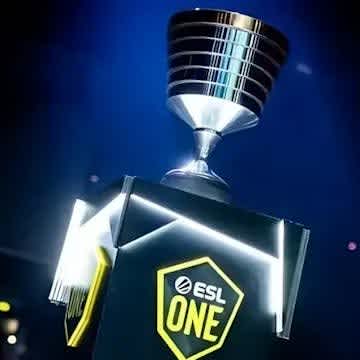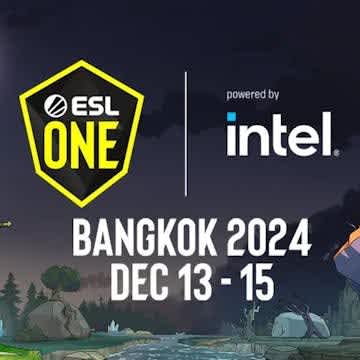How did the Dota Pro Circuit Develop?
Once upon a time, a long time ago in a faraway land, where metas were fun and heroes were balanced, the legends of Dota were born.
Today, we tell the tale of how the DPC came to be - the problems in Dota, the storylines along the way, and the ultimate evolution of a competitive circuit. For esports fans new and old - this is for you.
Five years ago, Valve announced The Majors, the beginning of what would become the DPC as we know it today.
No esports scene is perfect, and while Dota has plenty of ways to improve, let's take a look back at the scene in 2015
Problems in Dota 2, Before the Majors
Rosters shuffled constantly, and there were no RULES around it. The only unwritten rule was that TI invited rosters were set in stone. Fnatic fought to compete with Xcalibur, rather than Era in TI4, with nothing other than emails from Valve to determine who was allowed to compete
Era ended up playing at TI4, and Fnatic came in 13th-14th place, forced to stick with the roster that was invited to TI
And while we are on the topic of invites... guessing who would be invited to TI was a FUN GAME FOR FANS - less fun if you were one of the players wondering if you would need to play qualifiers or if you were already in. And the system for invites? A closed Valve decision, with zero transparency.
As one article put it "While TI shines like a beacon for everything good and glamorous about competitive gaming, it only lasts for a few days in the summer. Once its bright lights have been shut down and the massive Seattle venue has been emptied out, players are left to their own devices for the rest of the year."
And ultimately, little to no communication from Valve was the unfortunate standard of care for the Dota 2 scene.
And so - the majors were born. This gave teams an idea of the schedule to expect, pumped in tons of prize pool to the scene (3 million per major), and added somewhat clear and rigid roster rules to look to protect players
Before we jump into the Majors, we have to acknowledge DAC 2015, the event that was clearly the testing ground for the higher prize pool and hjigher budget majors to come - featuring over 3 million in prize pool, a dedicated compendium, and the almost debut of now superstar SumaiL
The Dota 2 Majors
Now, into the actual majors! Frankfurt, presented by ESL, was the first event to roll around. OG claimed their first title, starting a legacy of success that no one could have predicted.
Shanghai was next up, with Team Secret winning their first Valve title. Unfortunately for their legacy, few really focus on their succes and instead... remember a few other things from that major
Not only was Shanghai the source of IMMENSE production and event failures, the roster aftermath was bloody - to say the least. Arteezy and Universe left EG to join Secret, Bulba and Aui 2000 left DC to join EG, and DC picked up w33ha from Secret's kick. All in the space of a week or so due to the harsh constraints of the Major roster rules.
Secret and EG ended up in last at the Manila Major, leaving an easy field for OG to roll over everyone and grab another title. More roster chaos ensued, with the deadlines imposed by Valve pushing both EG AND Secret through the open qualifiers for TI. That's right, TI5 champions and Shanghai Major winners had to play open qualifiers to make it into TI6.
And then the team they both poached from ending up in second place.... go figure.
So... after the first year we were left with three majors that took about a month each, far too rigid roster locks, and multiple week long qualifiers for the next Major.
All of that meant that third party tournaments suffered, teams made forced roster change decisions, and last minute kicks could mean some players were unfairly left team less. So then they cut it down to two Majors for the next year.
It wasn't just one less Major to free up the schedule, majors also got condensed, moving into a single elimination (rather than double) format - making way for one of the best story lines in the history of Dota - Ad Finem. OG won that event, but Ad Finem's performance, and enthusiasm, will always be what is most remembered. OG felt that three Major titles weren't enough, so they picked up a fourth at the Kiev Major. But even with this system, we still lacked invite transparency, and the guessing games of who would make it to TI continued. And with this, the Dota 2 Pro Circuit was born.
The Dota 2 Pro Circuit
A series of Majors and Minors, with half the prize pool contributed by Valve, would be run by third party tournament organizers.
Majors were worth more points than minors, and at the end of the season, the top 8 point earning teams were directly invited to TI. Points were attached to players rather than rigid roster deadlines, with penalties for roster moves outside of approved trading windows
While this season was fun - it was messy. ESL and Starladder DMCAs threatened viewer access to tournaments, while drug testing and player safety concerns meant that one major got downgraded. Teams traveled and played non stop, and minors meant for the T2 scene got flooded by tier 1 teams stacking up loads of points, and some TOs dissapeared without ever paying out their prize pool or talent fees.
With no clear guidelines on what teams could be invited and what formats could be used, this system lacked the tier 2 support that Valve was pursuing,
And that is how we landed on the 5 majors and minors system that most current Dota fans are most familiar with.
Qualifying points moved to sitting with teams rather than players, and even less rigid roster locks resulted. Minor winners earned themselves a spot to the Major, and most of the qualifying points came from those Majors. Unfortunately, open qualifiers started RIGHT after the Major ended, leaving teams with little to no time to make roster changes, fly home, practice - anything. The schedule was too full, and players suffered.
The next season of the DPC remained mostly the same, but with more space between the end of Major events and the qualifiers, and a single qualifier for both the minors and the majors. This iteration didn't get to finish, but we did have some fun memories along the way.
This system has starved out third party tournaments from the schedule and still failed to properly support a healthy t2 scene. Now, we wait to see the next iteration of the DPC, where we return to three Majors and see regional leagues that hopefully develop and prop up the tier 2 and 3 scenes
And there is the tale of the evolution of the DPC system - with iterations and changes every year in the hopes to sustainably support the Dota 2 ecosystem. Players, teams, tournaments and Valve all battle to find a balance. Perhaps regional leagues will be the happily ever after Dota 2 has been looking for





